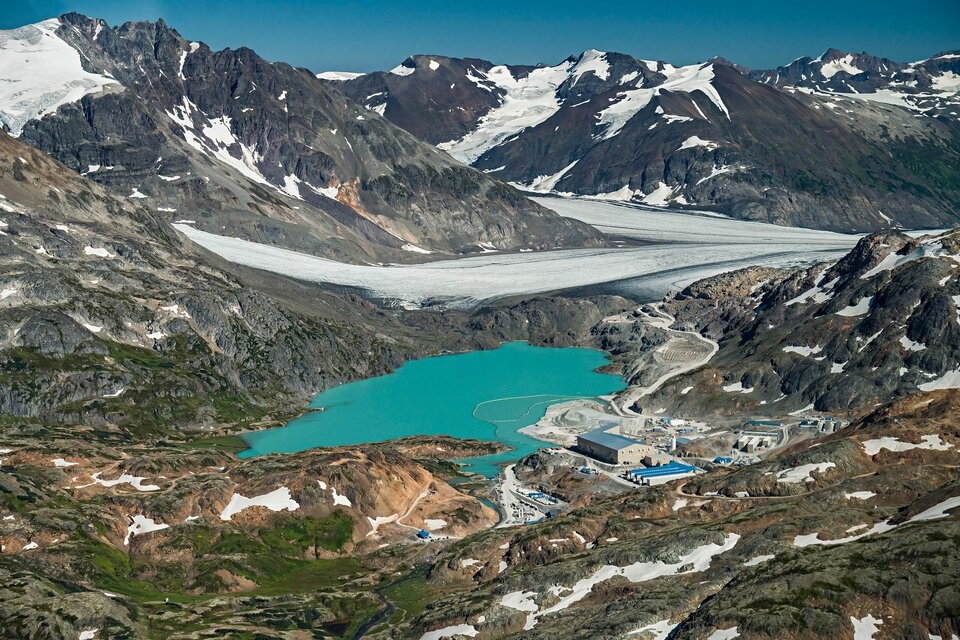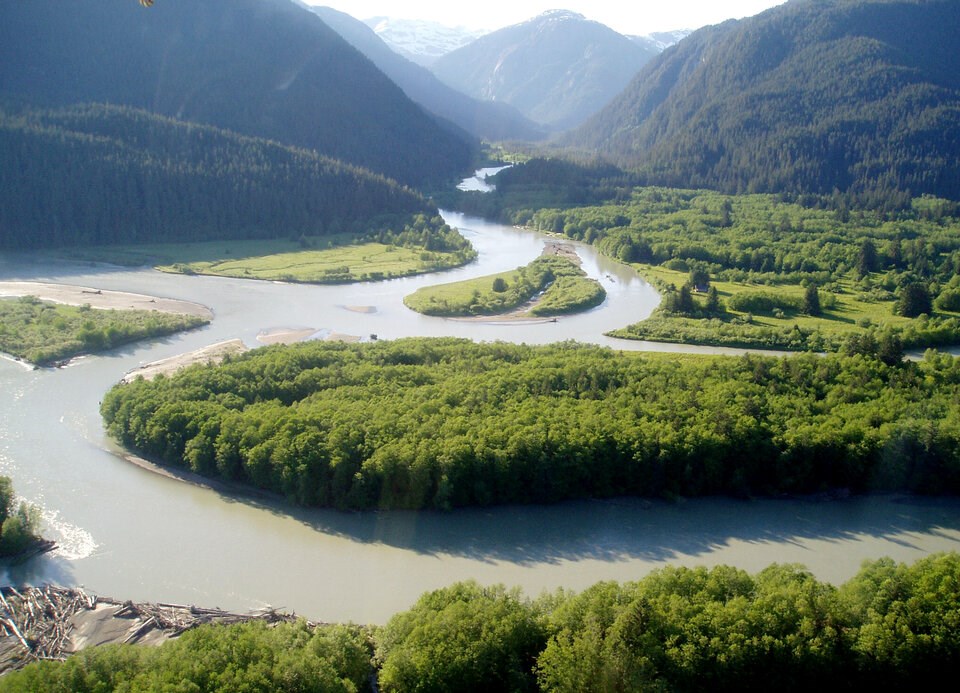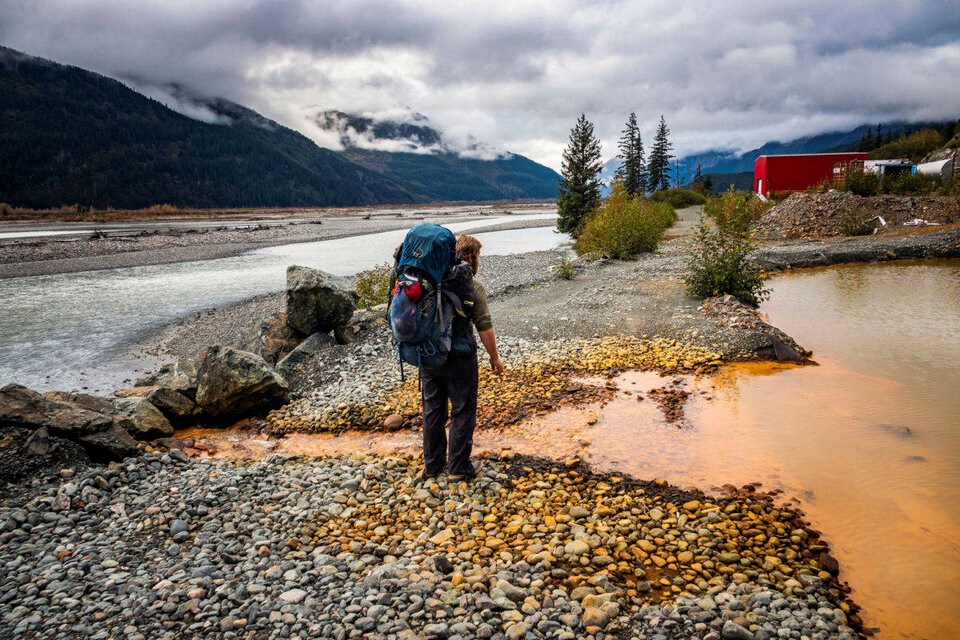A consortium of 15 Alaskan tribes bordering British Columbia’s ‘Golden Triangle’ region are claiming that Canadian mining operations are threatening their right to a healthy environment.
The claim, submitted in a 112-page brief to the Inter-American Commission on Human Rights this week, says Canada has failed to adequately consult tribes of the Tlingit, Haida and Tsimshian Nations. Together, they have banded together under the Southeast Alaska Indigenous Transboundary Commission (SEITC) to oppose B.C. mining in the headwaters of three rivers.
Reached at the capitol building in Juneau, Alaska, SEITC executive director Guy Archibald said the tribes are seeking enforceable protections to ensure rivers downstream of mines aren’t polluted with runoff from the Canadian side.
“We have rights that need to be protected here. And B.C. and the mining companies are making no effort to protect these rights,” said Archibald.
“They've never sat down with us and asked us how do we use rivers?”
Claims target big mines on three rivers
The SEITC’s latest allegation builds on previous claims accepted by the human rights body last fall, when it accepted the expansion of mining operations on the B.C. side of the border could violate the human rights of Alaskan tribes.
That original submission claims Canada failed to obtain free, prior and informed consent from tribes when it backed six mining projects in the upper reaches of three B.C. rivers flowing into Alaska.
Those included the Schaft Creek, Galore Creek and Red Chris mines in the Stikine watershed; the KSM and Brucejack mines in the Unuk watershed; and the Tulsequah Chief mine in the Taku watershed.
Together, the mines pose an “imminent and foreseeable threat of polluting downstream waters with highly toxic heavy metals” and could cause “sustained and significant” declines on the fish the tribes rely on to survive and maintain their culture, says the latest brief.

Canada alleged the tribes’ petition was “manifestly groundless or out of order” and dismissed that the mining projects involved risk of “significant environmental harm.”
The petition is now scheduled to move to the merits stage, which is where the human rights commission will determine whether or not there were violations of human rights.
The body has no power to enforce its decisions. Instead, if human rights violations are found, the commission sends a report detailing their conclusions and provides recommendations to the member state.
Alaskan tribes worry 'incredibly important' fish resource could be threatened
The transboundary region of the B.C.-Alaska border has long been a hot spot for mining. But for people downstream of the mega-projects, digging up gold and copper has brought more anxiety than wealth.
Archibald said that when the Eskay Creek mine — one of the highest-grade gold mines in the world — was operational between 1994 and 2008, eulachon runs on the Unuk River first dwindled and then disappeared.
About a decade after the mine closed, the fish started coming back, every year, growing in number. And while the smelt, long prized for its oil, haven’t returned to their historic levels — something Archibald attributes to untreated mine waste still flowing into the Unuk — over the next few weeks, they hope to have a traditional harvest for the first time in years.
Such food sources are important for a collection of tribes spread along a rugged coastline carved up by rivers and a tangle of fjords — where roads are rare and everything comes in by airplane or barge.
“It's more water than it is land,” he said. “That makes commercial foods incredibly expensive and they tend to be very low quality.”

Archibald said fish like salmon remain an “incredibly important” staple sustaining local diets. But more than that, salmon and the river they swim through are inextricably tied to tribal identity and culture.
Last month, the SEITC submitted evidence to environmental regulators on the Canadian side of the border affirming their historic presence along the Unuk River, a water body said to have been revealed to seven tribes “through a dream.”
B.C.’s Environmental Assessment Office (EAO) confirmed it is now reviewing the information provided by SEITC.
“The EAO’s longstanding and current practice is to engage with potentially affected Indigenous communities in Alaska where there are potential transboundary effects associated with proposed projects located in B.C.,” said the office in an unattributed statement.
“Meaningful engagement with potentially affected communities is critical to ensure the responsible development of mineral resources in the transboundary region.”
Climate change, fish and gold on a collision path
As climate change tips the world’s frozen environments above freezing, glaciers and the high mountain reaches they occupy are melting.
That's expected to be a boon for the transboundary region, where thawing rivers are forecast to open up thousands of kilometres of new salmon habitat, and could offer a refuge from hotter rivers to the south.
But according to research published last November, those salmon could be swimming into direct conflict with mining companies looking to cash in on a new B.C. gold rush one recent investigation described as having the “structural and operational attributes of a Ponzi scheme.”
In a November 2023 Simon Fraser University study, lead researcher Jonathan Moore analyzed just how many mining claims overlapped with glaciers. Together with his team, he found that in 25 of the 114 rivers surveyed in the transboundary region, more than half of future salmon habitat lies within five kilometres of a mining claim.

That overlap worries people like Heather Hardcastle, a campaign advisor with the Juneau-based advocacy group Salmon State. As the Golden Triangle region heads further down a path to industrialization, she worries the thousands of kilometres of exploratory borehole drilling could contaminate waterways vital to fish.
“Just something like one U.S. penny made of copper in one Olympic-sized swimming pool would be enough to interfere with the navigation system of salmon,” said Hardcastle earlier this year.
Ramin Pejan, a senior attorney representing SEITC, said the worst part is Canada and B.C. are facilitating the mining projects “under the guise of developing critical minerals for a clean energy transition” while the mines mostly produce gold.
“It’s deceptive and misleading,” he said in a statement.
'Not getting meaningful consultation'
Archibald said most of the mines the tribes are worried about haven’t actually been built yet. He pointed to KSM and Galore Creek, which he says could be among the largest open-pit mines in the world.
So far, Canada and B.C. have permitted three of the six mines. Two are operating and another has been granted environmental authorizations. New Polaris and Eskay Creek, meanwhile, have been proposed and are in the permitting stage.
But while plans to reopen Eskay Creek advanced following successful consultation with the Tahltan Nation, Archibald says tribes on the U.S. side of the border haven’t received the same treatment despite Canadian legal precedent calling on government to do so.
“We're not getting meaningful consultation,” said Archibald.
“It's hard to look children and grandchildren in the eye.”



